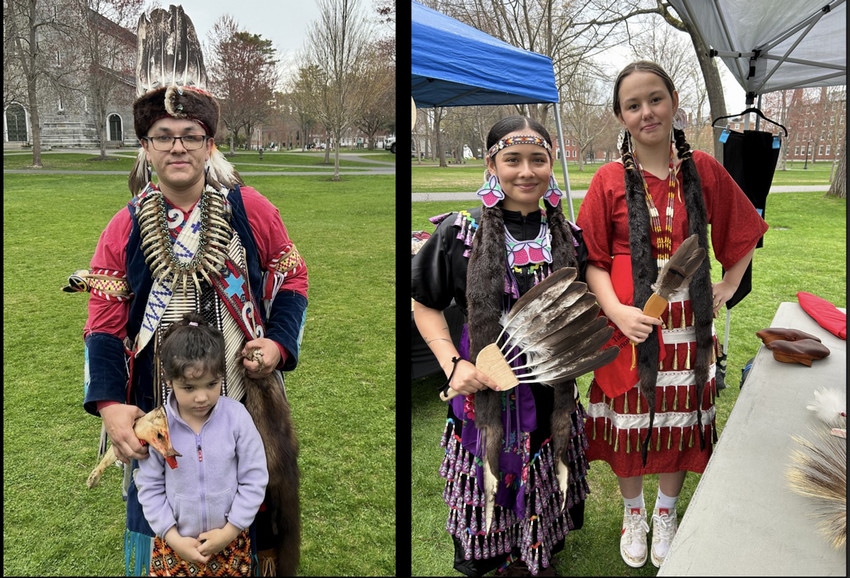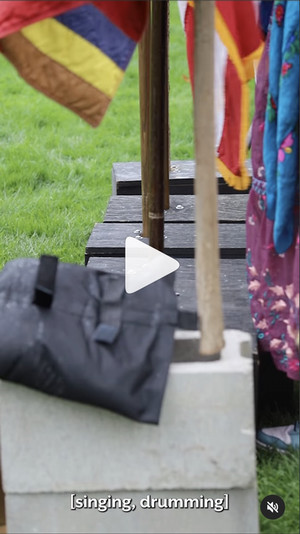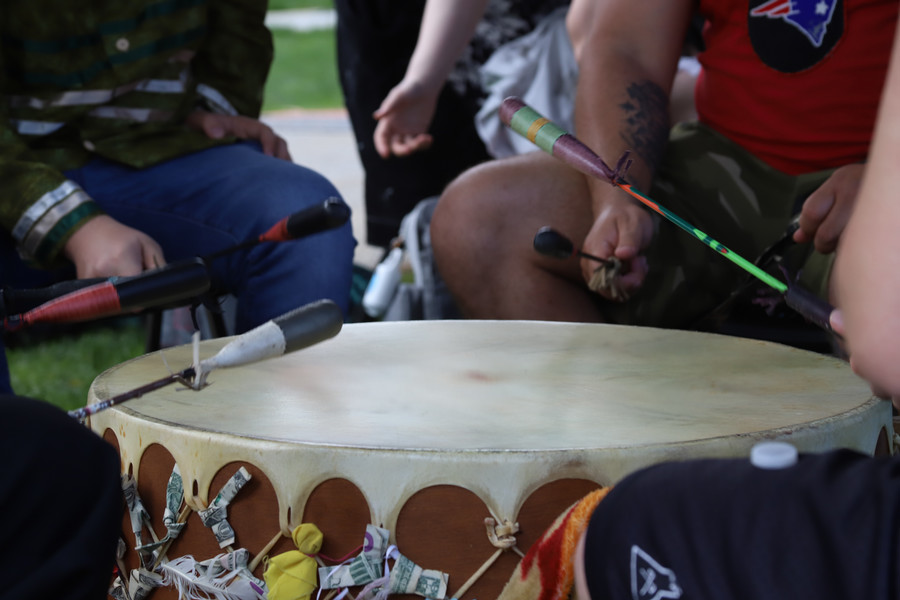Honoring Tribal Cultures
By Tom PorterIndigenous groups from Maine and Canada headed to campus on Saturday, May 03, 2025, for the second annual Bowdoin powwow. It was an afternoon of dancing, drumming, singing, and education.
“Our regalia is our identity,” said Isaac Syliboy, who traveled down with family and friends from the Passamaquoddy reservation in Washington County.
He was resplendent in an eagle tail headdress with grizzly claws adorning the front of his tunic. “Certain designs say who we are and where we’re from,” explained Syliboy, in between displays of tribal dancing. He also wears wampum beads and carries a moose jawbone, which has its own story. “My buddy hunted this moose in 2007. He dances with the other jawbone.”
Syliboy described the dance he performed as “northern men’s traditional,” which is a form of storytelling. He travels across North America taking part in powwows—community events where Native American and First Nations groups come together to celebrate their culture. “I’ve been as a far as Albuquerque, New Mexico,” he said. It’s all about education and about sharing culture and traditions, he added. “I was raised doing this type of stuff, so it’s second nature for me to pass it on to my children.”

Aliya Sabbatis, fourteen, and her twenty-year-old cousin, Ella Bither, are with the Houlton Band of Maliseets in northern Maine, another branch of the Wabanaki nation. They were excited to be wearing “jingle dresses” and performing jingle dress dances. These items of women’s regalia feature rows of metal cones that make a jingling sound as the wearer performs a prayer dance. They started wearing them last year, Sabbatis explained, after undergoing an initiation ceremony that involves going in a sweat lodge. “It’s built by tribal members, and it represents the womb.” You can’t wear the dress or perform the dance until you’ve been in the sweat lodge, she stressed. “It’s a very sacred thing.” The way the jingle dress dance typically works is this: “Someone comes up to you with a ‘tobacco tie’ [a piece of cloth containing tobacco and a prayer] and asks you to pray for their community. You then dance with it in your hand and pray.” Prayers are silent, said Bither, but when dancing, “You think good thoughts.”

“We do a lot of work for the tribe around the state,” said Clarissa Sabbatis, who, as well as being Aliya’s mother is Tribal Chief of the Houlton Band of Maliseets. The goal, she added, is to spread the word about their culture. “It’s important to have people exposed to our dance and our language and for them to understand that we’re still here... We’re not just mascots, or forgotten people,” she said. “It’s great to have people come here and celebrate with us.”
“The powwow is an opportunity for many tribal nations to come together in song and ceremony and to learn from and with each other,” said Bowdoin’s Senior Vice President for Inclusion and Diversity Benje Douglas, who helped bring the event to campus for the second year. “From the drumming to the regalia of the dancers, there is meaning and community embedded in each step and song. Bowdoin hosts it because we were encouraged to by Native students who wanted to see an event on campus that marked the joy and resiliencies of Native life as well as the power and strength and diversity of Indigenous communities.”
Enjoy this slideshow of images from the event. Photography by Adam Bovie.



